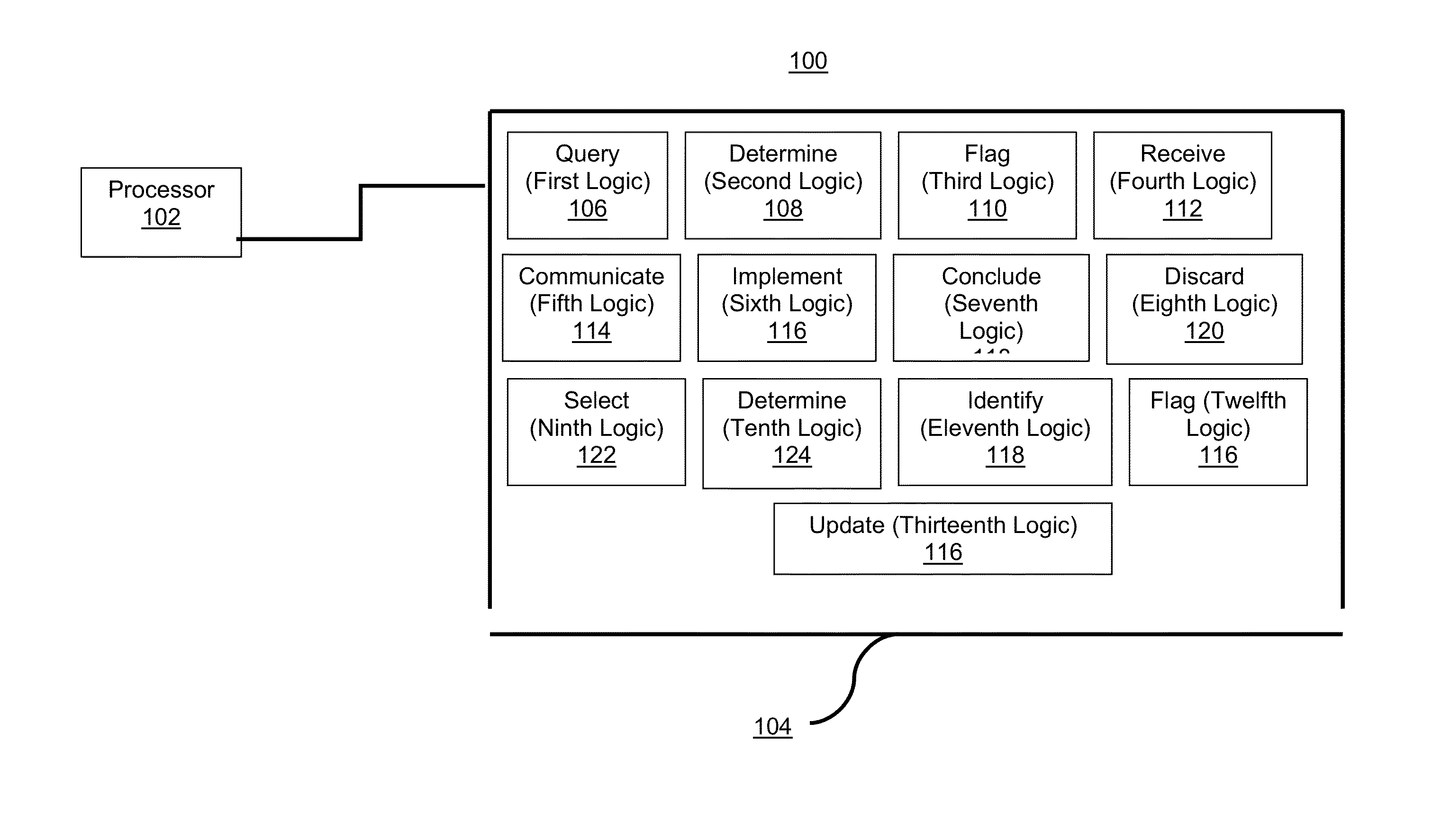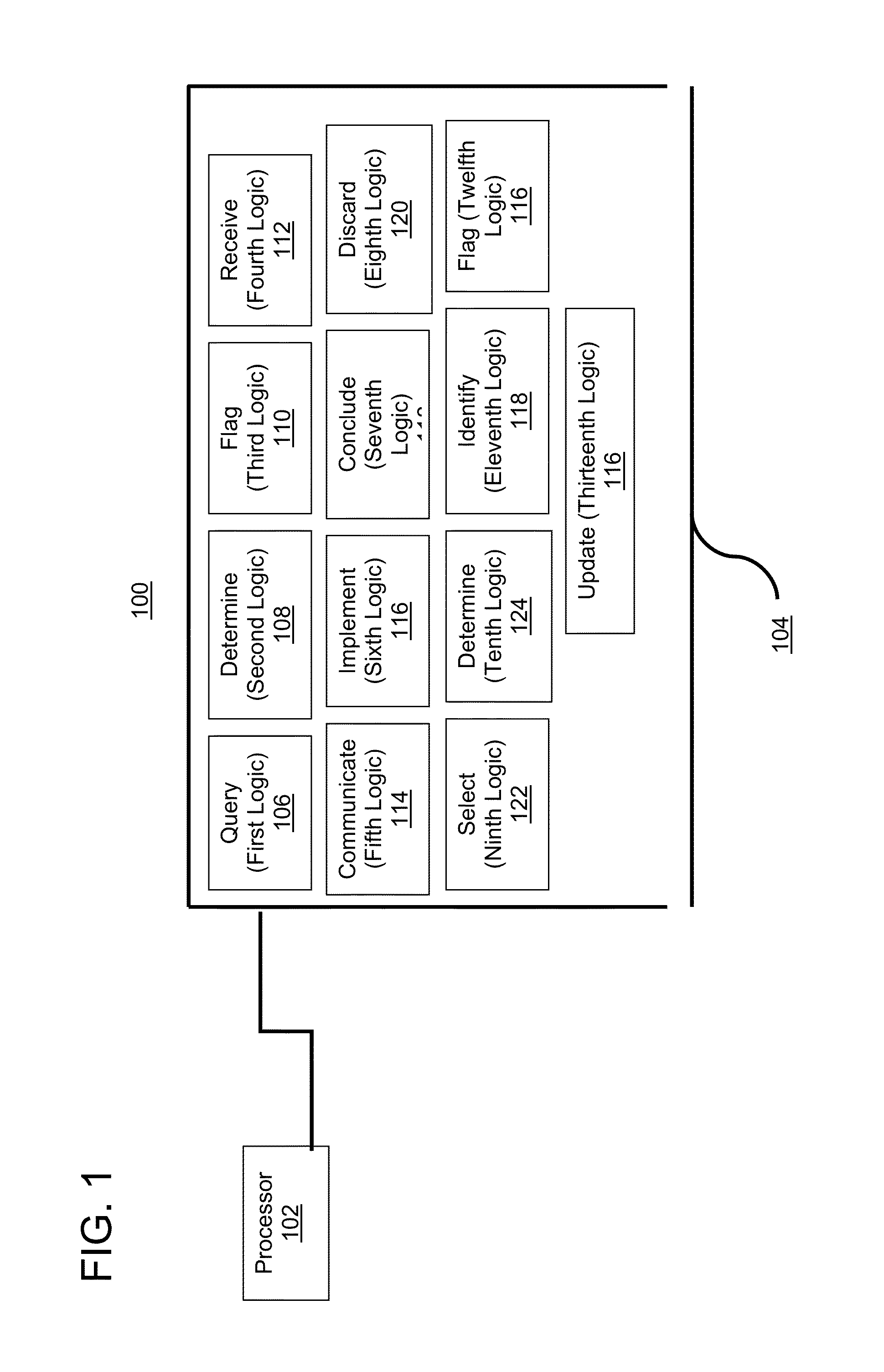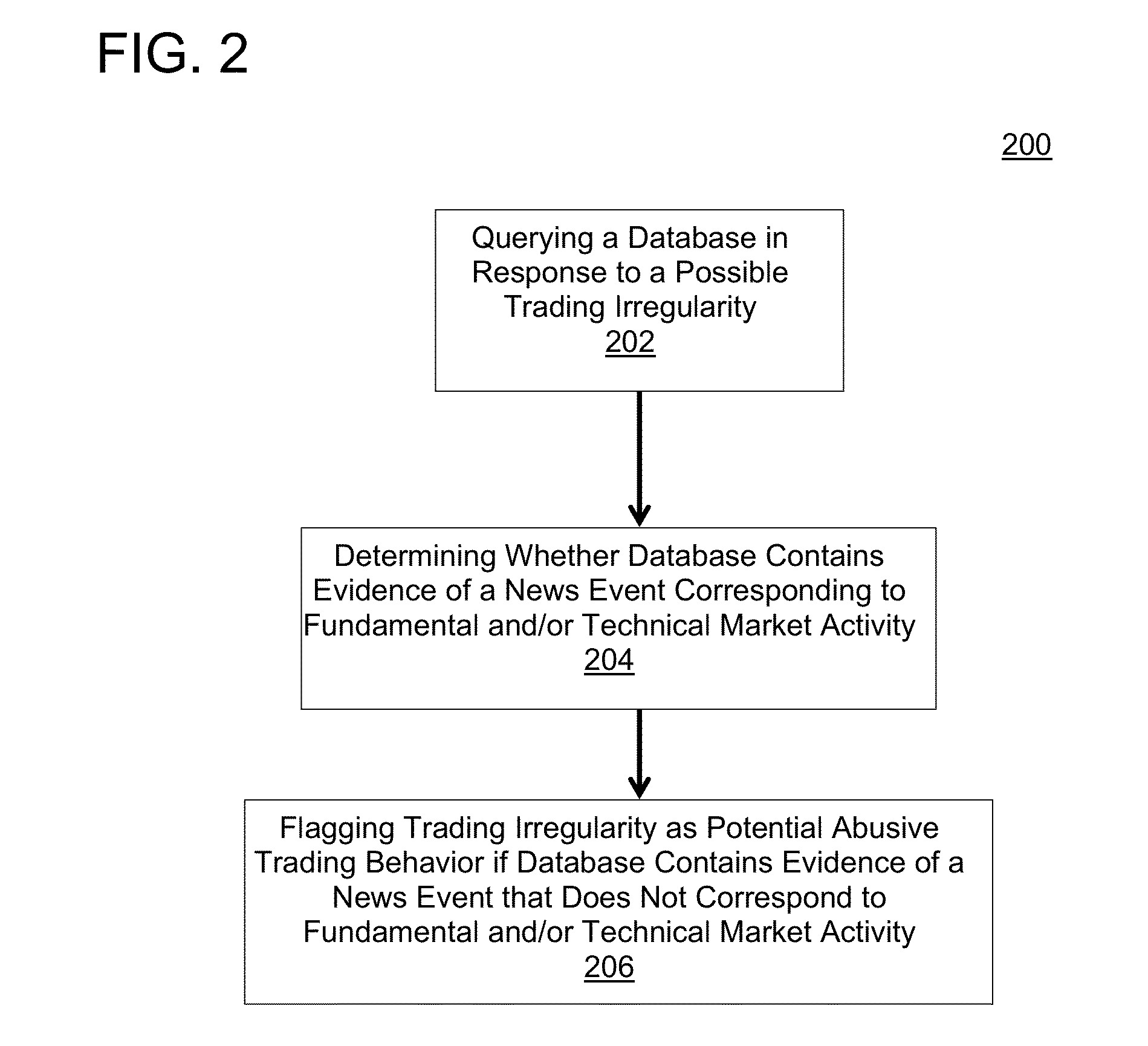Detection of Potential Abusive Trading Behavior in Electronic Markets
a technology of electronic markets and trading behavior, applied in the field of detection of potential abusive trading behavior in electronic markets, can solve the problems of labor-intensive manual examination techniques, easy abuse of hft, and high detection cos
- Summary
- Abstract
- Description
- Claims
- Application Information
AI Technical Summary
Benefits of technology
Problems solved by technology
Method used
Image
Examples
Embodiment Construction
[0012]High-frequency trading (HFT) is typically characterized by rapid entry and cancellation of orders via an automated trading system (ATS) in response to dynamic market conditions. Exchanges and regulators tend to regard HFT—and algorithmic trading (AT) in general—as potential sources of concern in light of the relative novelty of these practices and the heightened media focus they receive. By way of example, regulators have alleged that high-frequency traders may engage in “abusive” trading patterns that are not necessarily inspired by dynamic fundamental and / or technical trading conditions. Heretofore, detection of abusive behavior in HFT has been difficult and resource-intensive, and typically involves laborious manual investigative procedures.
[0013]Methods and systems for detecting potential abusive trading behavior in electronic markets have been discovered and are described herein. In some embodiments, the present teachings may be used in the context of regulatory surveilla...
PUM
 Login to View More
Login to View More Abstract
Description
Claims
Application Information
 Login to View More
Login to View More - R&D
- Intellectual Property
- Life Sciences
- Materials
- Tech Scout
- Unparalleled Data Quality
- Higher Quality Content
- 60% Fewer Hallucinations
Browse by: Latest US Patents, China's latest patents, Technical Efficacy Thesaurus, Application Domain, Technology Topic, Popular Technical Reports.
© 2025 PatSnap. All rights reserved.Legal|Privacy policy|Modern Slavery Act Transparency Statement|Sitemap|About US| Contact US: help@patsnap.com



